Auburn Art junior Collin Crowder unfolds passions through origami
Fine arts major Collin Crowder’s artistic journey highlights the unique intersection of origami, music and fine arts. Crowder, regarded among the best origamists in the world, recently displayed his work in Biggin Hall. The gallery, titled “Crustaceans and Tessellations,” showcased some of Crowder’s most intricate designs. Crowder discusses his journey into origami and how the art form has impacted his life away from the paper.
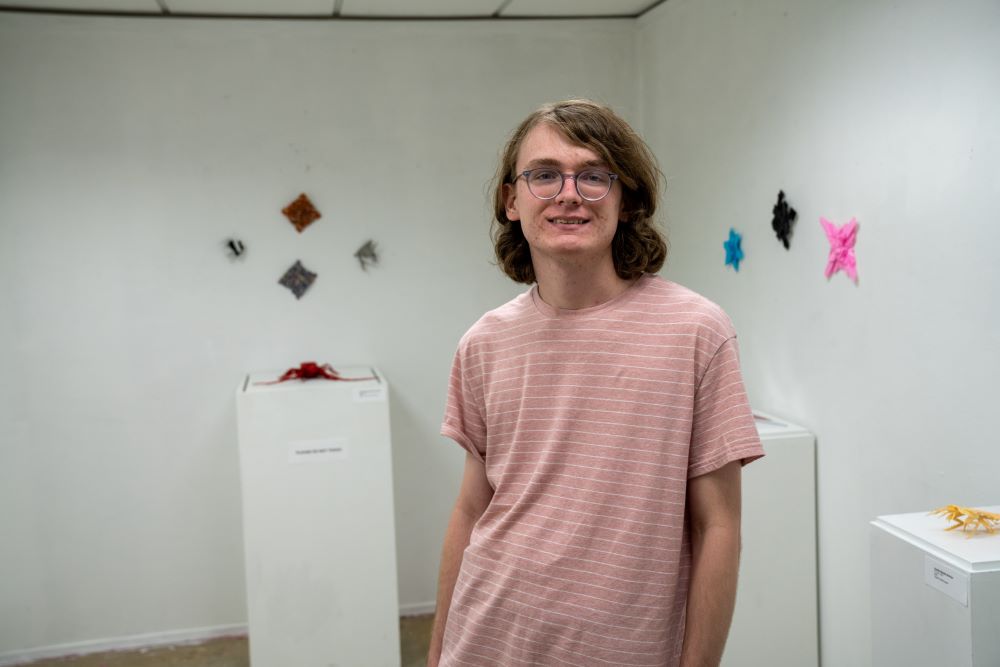
When did you first learn about origami and how did you realize your passion for it?
When I was in second grade, we had an exchange student from Japan. Every Friday in school, someone from the class would get a day to show and tell. He brought these spinning origami tops that were made out of three sheets of paper. I thought it was really cool, so I took one of the tops home and learned how to assemble it. I then started making a bunch and then from there, my parents would buy me books, or I'd find YouTube tutorials. It just kept building from there, really.
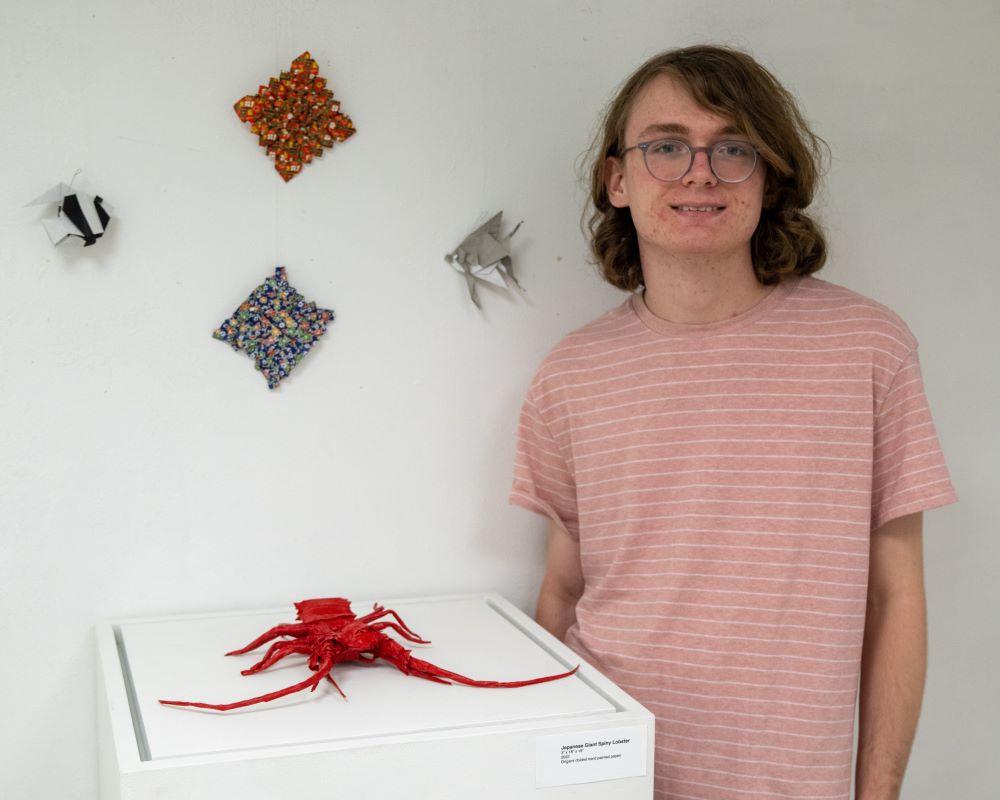
Origami is a very complicated process. How do you map the process out and visualize your design in your head?
There are three distinct phases. Pre-creasing is the first one, which is where you just copy, you do the grid, and then you do all these lines. You have collapsing, which is phase two. Phase three is the expressive part, the less analytical part, because you're just moving the paper as you see fit to make it look more realistic and less papery.

First, you get what you call a crease pattern. A crease pattern is basically this grid. Each line on the grid represents a fold and they're equal distances away from each other. From there, I start by getting my square and folding that grid. So then every crease, the points of the lines line up on that grid somewhere. So that's where I get the reference points for all the folds.
A red line is an upwards fold and a blue line is a downwards fold. So I just copy all of these lines onto my paper by just folding the creases. And then once I’ve done that, I do what is called collapsing, where it finally goes from being a flat sheet of paper with a bunch of lines on it to becoming a model. Basically, I push it all together at once. So that's when all the layers come together. And then after that, I have the base of the model, which is essentially the completed model, just missing the detailing.
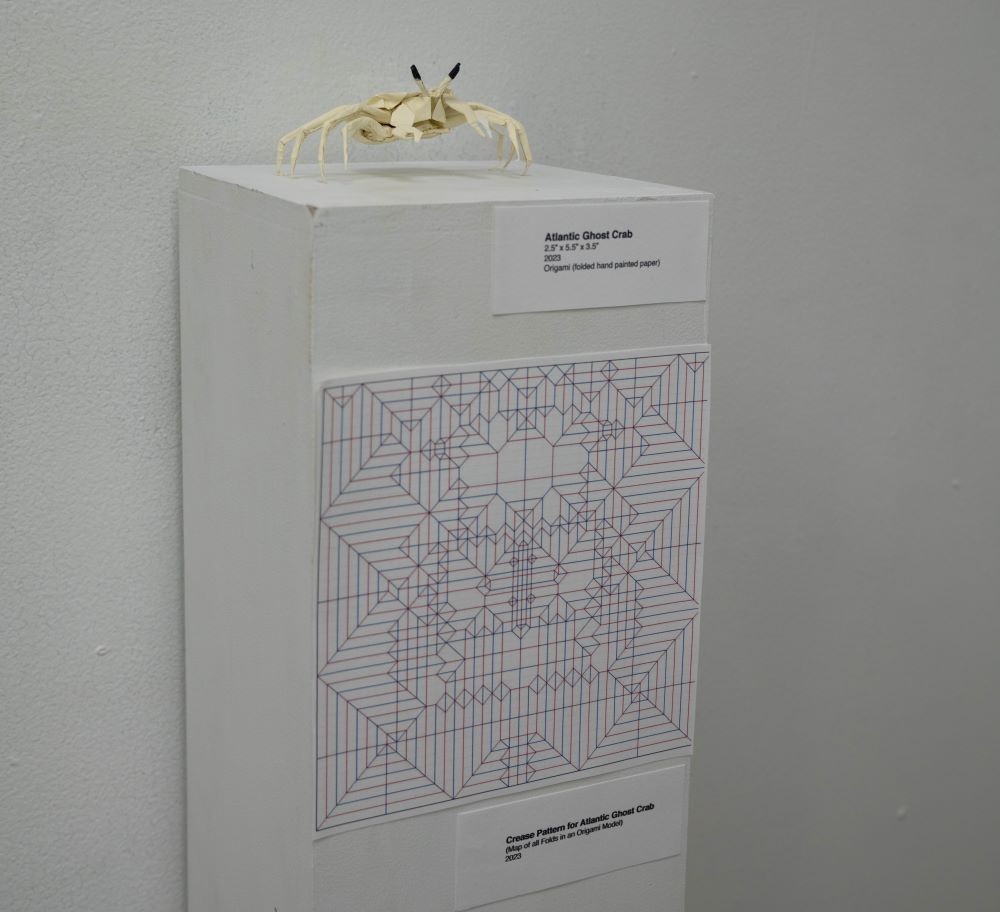
Then, I am able to reshape the design and sometimes use glue to reinforce the paper. I guess you could say it’s the most creative part because it’s so detailed.

You're also a musician. What skills transfer from making music to making origami, or vice-versa?
It's really interesting actually because origami is very analytical. You have algorithms to know what creases work where. I approach my music like that too, especially electronic music or things like niche sub-genres. You can take the same analytical approach to it. Designing origami, for example, the way that it gets planned out, you can think of that in the same way as how you would plan out the structure of a song. The skills transfer but in a more abstract way.
Did your passion for origami lead you to study fine arts, or did something else draw you to the program?
My mom is an artist, so I grew up seeing all of her paintings and sculptures. Growing up with that made me interested in it. I've always been drawn to cartoons and anime as well. I just had an interest that has transformed into my affection for drawing, painting and origami.
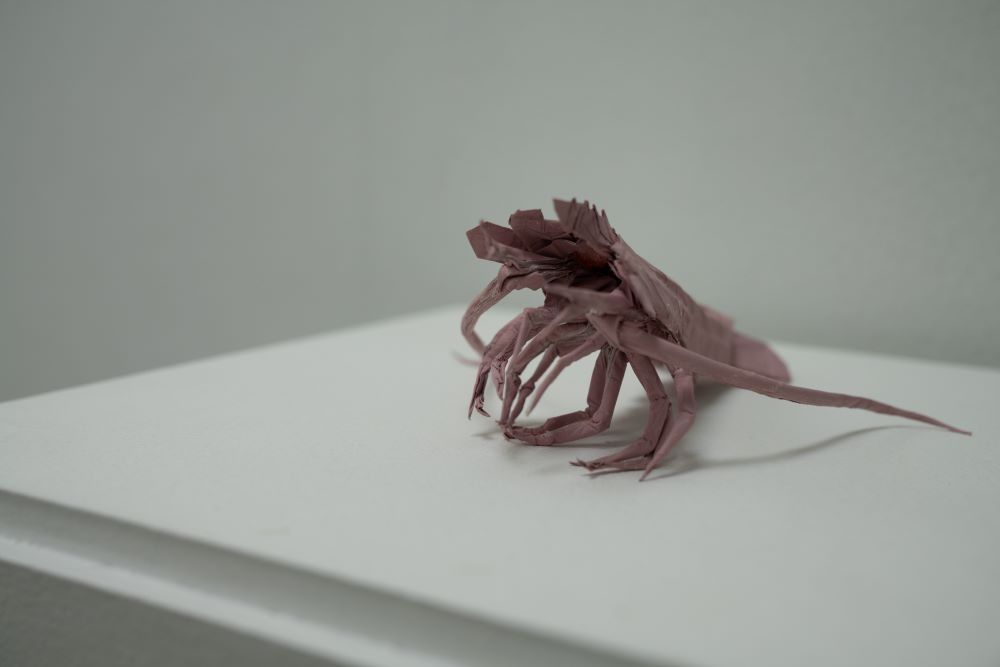
How has your Auburn experience helped expand your passion or ability to create art?
Origami is a niche, obviously. There isn’t an origami class you can take, but Auburn has broadened the scope of things. I've taken relief printmaking, for example, and that's something I never would've had the opportunity to do, except through my Auburn education. Being able to learn different processes like that has broadened the way that I can approach things like origami. Being in fine arts allows me to explore different paths. I'm the kind of person that I have to be doing creative things.
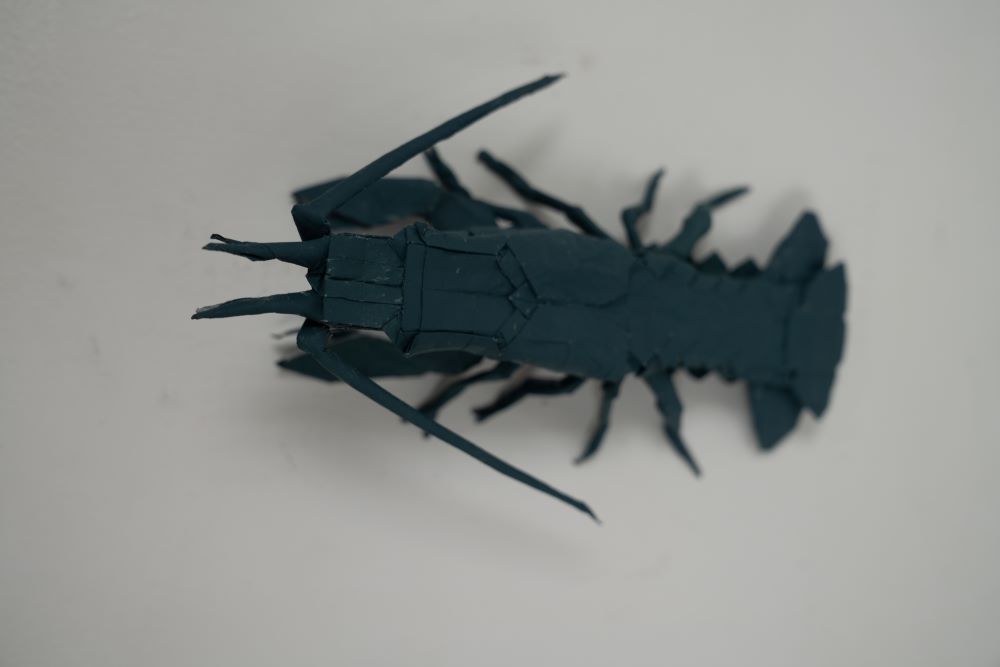
What skills can you take from your experience making origami into your post-graduate life?
Patience and problem-solving, for sure. There's no cutting or tearing in origami, cutting takes the fun out of it because you can’t problem-solve. It's all through precise folds. You need patience because it's ridiculous how long just making the grid can take. It’s definitely something that helps me get through assignments or other tasks, knowing as long as I’m patient, I can get through something.
Learn more about fine arts in the College of Liberal Arts.
Explore more of Crowder’s art.
Tags: Students Art and Art History







